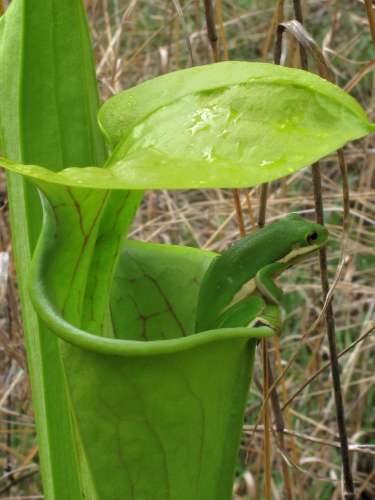 There have been studies that have calculated the likelihood of extinction for various amphibian species, but the first study to calculate how fast amphibian populations are declining was recently published in PLoS ONE.
There have been studies that have calculated the likelihood of extinction for various amphibian species, but the first study to calculate how fast amphibian populations are declining was recently published in PLoS ONE.
The study found that amphibians disappeared from their habitats at a rate of 3.7% per year from 2002 to 2011. Species that are red-listed by the International Union for Conservation of Nature (IUCN) disappeared at an average of 11.6% annually.
“Even though these declines seem small on the surface, they are not,” said US Geological Survey ecologist Michael Adams, the lead author of the study in a press release. “Small numbers build up to dramatic declines with time. We knew there was a big problem with amphibians, but these numbers are both surprising and of significant concern.”
Read the PLoS ONE article, here. (Open access.)
Read the USGS press release on the paper, here.
Read a Washington Post article that is mostly about the rate of amphibian decline, here.
Photo: A green tree frog (Hyla cinerea) sits on the lip of a pitcher plant in a bog in Alabama. Photo by Alan Cressler, used courtesy USGS.

One component of the problem is the international commerce in American bullfrogs for human consumption. Recent studies have documented that the majority of the market frogs are testing positive for the the dreaded chytrid fungus (Batrachochytrium dendrobatidis, or Bd), which is believed to be responsible for the extinctions of more than 200 frog and other amphibian species worldwide in recent years.
Though the bullfrogs don’t succumb to the disease, they certainly do disperse it when released into local waters, a common though illegal practice, often done by certain religious sects in “animal liberation” ceremonies, or by well-meaning but ill-informed “do-gooders.”
California annually imports some TWO MILLION non-native bullfrogs for food, mostly sold in various “Chinatowns” throughout the state: Los Angeles, San Francisco, Oakland, San Jose, Sacramento, et al. The bullfrogs displace and prey upon our native species, while spreading diseases.
This commerce should stop immediately. Even now, reportedly, the European Union and Australia allow the importation of only FROZEN frog parts for food. The U.S. should follow suit.
A small group of us has been urging the California Dept. of Fish & Wildlife to cease issuing the import permits for these frogs for almost 18 years now. Indeed, the Fish & Game Commission instructed the Dept. to do just that back in 2010, but were ignored for political and cultural reasons. Too sad.
HOW YOU CAN HELP: Write to Chuck Bonham, Director DFW, asking that these permits cease: 1416 Ninth Street, Sacramento, CA 95814; email – chuck.bonham@wildlife.ca.gov
The importation of millions of bullfrogs into California for the live animal markets is an ongoing disaster allowed by the Fish and Game Commission who now refuse to even put the issue on their agenda. The Legislature shares in this lack of responsibility and action as it is a political hot potato no one wants to touch. California has also imported millions of red ear sliders for the same markets to the detriment of our state’s wildlife and the wildlife in other states where the turtles are taken from the wild.
The importation of millions of bullfrogs into California for the live animal markets is an ongoing disaster allowed by the Fish and Game Commission who now refuse to even put the issue on their agenda. The Legislature shares in this lack of responsibility and action as it is a political hot potato no one wants to touch. California has also imported millions of red ear sliders for the same markets to the detriment of our state’s wildlife and the wildlife in other states where the turtles are taken from the wild.
I’m allowing both these comments even though I have a pretty good idea that the two of you are colleagues, and I feel that taken together (given how few comments we have here) these two comments border on piling on a single state wildlife agency. This site is a place for state wildlife biologists to come and learn what their colleagues in other states are doing, not to get smacked around. That said, these are good points, calmly expressed, and I’ve certainly called out state wildlife agencies here when I’ve seen fit. (It’s hard to juggle my various WordPress identities, but I am indeed the editor and moderator of this blog.)
I’m allowing both these comments even though I have a pretty good idea that the two of you are colleagues, and I feel that taken together (given how few comments we have here) these two comments border on piling on a single state wildlife agency. This site is a place for state wildlife biologists to come and learn what their colleagues in other states are doing, not to get smacked around. That said, these are good points, calmly expressed, and I’ve certainly called out state wildlife agencies here when I’ve seen fit. (It’s hard to juggle my various WordPress identities, but I am indeed the editor and moderator of this blog.)